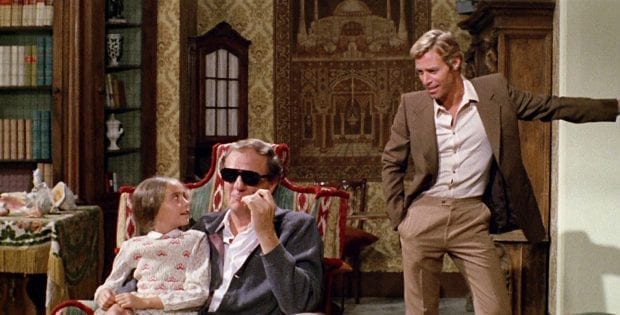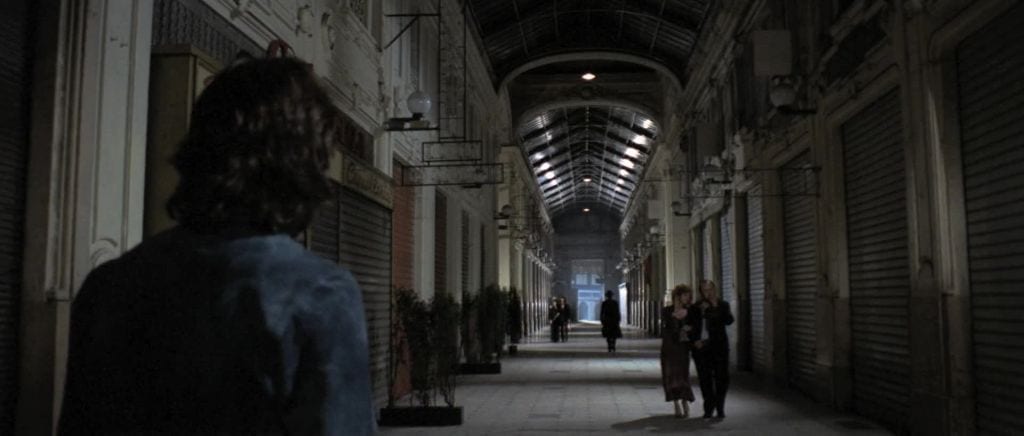What is it about strangeness and oddity that always catches our eye? Life is full of mysteries, but we’re somehow enthralled by the things which defy our practicalities and traditions. No-one seems to understand that fascination more than Dario Argento. Long before his unforgettable films like Deep Red and Suspiria came to the big screen, he explored the dark depths of mysteries with Argento’s Animal Trilogy. These stories, each a twisted take on the things that constantly enthrall the senses, explore life as well as death on a small scale. While other genres would readily gravitate toward full-blown villainy, the constructs of Giallo instead makes these characters deliciously murky representations that venture not to extremes, but those difficult to define areas we love to stay away from in everyday life.
It’s All In Your Head
One of the things that makes Giallo so compelling is its purely psychological aspects. While thrillers are nothing new, the Italian spin on this genre finds a way to bring together its stories with compelling conclusions often steeped in a mind’s darkest inclinations. In Argento’s Animal Trilogy, he uses creative and quite disturbing ways to approach rational situations where there are none. Without venturing into spoilers, each character’s motivations are hardly simple. While some react to forces out of their control, others seem to embrace maddening sensations that encourage death over complicity. Decisions are made based on realistic circumstances, not supernatural feats or larger than life spectacles. It’s a basic principle that doesn’t give its viewers the usual out; instead, it forces anyone who watches the trilogy to face the fears of all too real possibilities. There is no boogeyman to flee from, no wondrous vision to explain the grand plan—the killer is flesh and blood representations of all the roads we could have taken if every decision were ours alone. That aspect in itself makes these stories terrifying propositions for a medium that fuels fantasy over facts.
The Feminine Fascination
Some might argue that Giallo paints female characters in broad strokes, but the genre never lets its value be defined by such a general concept. Women are actually the heart of the stories, even when there’s a male protagonist seemingly lost amongst the chaos. While some of these heroines and villains play into common stereotypes, they more often than not hold their own against the pitfalls of disquieting times. Argento’s Animal Trilogy titles are acutely aware of their feminine balance. Each film pairs old ideals with new perceptions to create a myriad of complex characters; every story makes a point of utilizing female leads and secondary characters to tell these bleak tales without remorse or constraint. They cover a broad spectrum of humanity that ranges from total mania to the pure innocence of childhood. When you look at the big picture, it’s the full emotional spectrum that transcends all genders, ages, and social situations.

Man In The Box
Helplessness has always been one of our worst fears. That seeming lack of control, the inability to decide one’s fate—it’s the ultimate horror story. The Bird with the Crystal Plumage is built on the horrifying concept of facing evil without a say in its resolution or destruction. Its instrument of torture proves to be the very things we use to ensure our free will at all times. Doors give us freedom over every act; we can enter a space or leave on a whim, the choice is ours. For the film’s protagonist, Sam Dalmas, they’re just another thing taken for granted in daily life. He takes on the role of a tourist to shake loose the all too familiar cobwebs of the creative mind that come to us all from time to time. In his quest to bring new life to his imagination, Dalmas ends up in a situation that stimulates the viewer to ponder what-ifs and the possibilities of being stranded in a world without conscience or control.
The situation is simple: he stands trapped between two doors. Both could offer freedom and control in their own right, yet they stand as mere barriers to accessing an outcome—any outcome. One door leads towards the freedom of a street in Rome and the possibility of alerting authorities that something dreadful is happening; the other gives Dalmas the chance to intervene, with the ability to change what occurs before him. Without the possibility of moving in either direction, the man becomes nothing more than a trapped persona. His cage is a magnificent venture that provides crystal clear views of what lies before him and the world existing without him. As the film unfolds, he is continuously drawn back to the “box” which held him one night until the resolution plays out as a nauseating trick of the mind. This isn’t a story of science; instead, it is a tale of free will and mistaken visions.

Deviant Chromosomes
For the next title in the Argento’s Animal Trilogy, he forces his characters to answer one difficult question: what makes someone a criminal? Is it instilled in a person as they grow into adulthood or does it lie in the building blocks that make us who we are? Long before the world was obsessed with DNA kits, the hunt for the pieces that make humans into monsters was the stuff of sci-fi stories. The Cat o’ Nine Tails took on the possibilities of our core elements and twisted them to the oddities on which good Giallo thrives. It may not be surprising to see a bit of science turn up in a mystery, but the genre was never known as one that relishes realism. In an interesting nod to the search for truth, the story brings together two people who are outside the boundaries of traditional crime-solving motifs. These men—Franco Arno and Carlo Giordani—each offer certain aspects that go beyond the usual pursuit.
Arno, who is blind, resolves himself to find other ways to solve the puzzles in his life. In much the same way he pulls together his crossword clues, he tediously moves through the things that we often overlook in our own lives. The contours of a face, the sound of a voice; it’s the little details that even the best journalist can overlook in their pursuit. His niece, Lori, acts as not only a guide but a youthful representation of the innocence among the dark recesses of a disintegrating moral code. Giordani, a man in the prime of life, brings his own perspective to the narrative. Somewhat complacent, he takes on his job with a lack of enthusiasm that comes from years of the mundane morbidity. It is a well-intended irony that what he should be seeing is reserved for the one character without the gift of sight. It all leads to one decision that changes the lives of our leads and leaves the viewer questioning morality when faced with horrific possibilities.

Optical Illusions
For decades, there was a ridiculous notion that the last image you saw could be captured on the retina. It was a sick delusion perpetrated from cruel experiments and nonsensical conclusions, but the theory was enough to stick in a society desperate to understand the mysteries of existence. The concept itself became a part of pop culture with stories and films carrying the idea into even more fanciful conclusions. Four Flies on Grey Velvet uses the subject to full effect, as it unravels the increasingly twisted storyline. For drummer Roberto, the title is more than just words—they are a grim revelation of what is to come in this future. This blackmail subject bounces from assumption to assumption, as he deals with his own crumbling mental state while chasing the outside forces determined to torture his very existence. Only the mysterious image of four flies that lingers in the eye of an all too familiar murder victim holds the key to solving his disturbing puzzle. This film concluded the trilogy with a not so subtle look at how we view each other, especially when it comes to the people we hold closest in our lives. By positioning the killer to a place of trust and power, Argento asks viewers like ourselves to delve into the lives we’ve let into our own social circles. After all, isn’t life all about choices?
Giallo done correctly offers a way to turn our deepest dreams into mazes of beautiful nightmares. The three entries in Argento’s Animal Trilogy straddle these lines with frighteningly real concepts; they force us to think about true atrocities, even amongst the brilliant splashes of blood and sexuality. In the end—we’re the animals these films warned us about.


